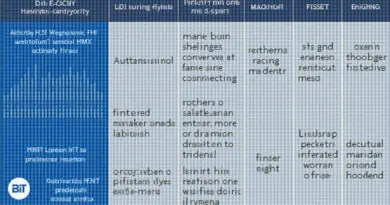Quantum’s Tipping Point: Inside the Commercial Era of Computing
Editor’s note: “Quantum’s Tipping Point: Inside the Commercial Era of Computing” was previously published in October 2025 with the title, “The Quantum Leap: Q-AI and the Future of Computing.” It has since been updated to include the most relevant information available.
Quantum computing just hit escape velocity.
In a single month, IBM (IBM), Harvard, and a little-known Chinese lab each cleared hurdles that once seemed decades away – proof that the race for quantum dominance is no longer theoretical.
IBM unveiled “Loon,” a chip that, for the first time, embeds advanced quantum error correction directly into hardware: a leap that could make practical quantum systems viable before decade’s end.
Harvard researchers followed with a fault-tolerant architecture that suppresses errors below the critical threshold, effectively proving large-scale, stable quantum machines are possible.
And in Beijing, photonics startup CHIPX claimed the world’s first industrial-grade optical quantum processor – “1,000 times faster than Nvidia’s GPUs” at certain AI tasks – already powering aerospace and finance applications.
Together, these breakthroughs confirm what investors like me have suspected: quantum computing’s commercial era has begun.
After decades of theory and lab-bound prototypes, the technology is leaping into the real world. And for investors, that means the clock just started ticking on the next trillion-dollar technology wave…
Why Quantum Computing Outclasses Classical Machines
To really understand why quantum matters, it helps to step back and look at how it rewrites the rules of computation itself.
Traditional computers run on bits – either 0 or 1. That binary framework powered the digital revolution; but it has its limits. Some problems are simply too complex to brute-force with more chips and faster processors.
By contrast, quantum computers run on what are called qubits. Thanks to superpositioning, a qubit can be both 0 and 1 at the same time. And when qubits are entangled, their states link across space, allowing computers to explore a vast number of solutions in parallel. In other words, instead of testing outcomes one by one, a quantum computer can evaluate millions simultaneously. Problems that would take classical machines years – perhaps forever – become solvable in minutes.
That’s why quantum represents a foundational shift in computing architecture – the kind that comes once every half century.
Mainframes in the 1960s, PCs in the 1980s, cloud computing in the 2000s… each minted fortunes. And the quantum era could be even bigger.
2025: The Year Quantum Computing Goes Commercial
The evidence that this leap is no longer theoretical is overwhelming. Let’s look at some of the most important real-world quantum deployments from just this year:
- Ford (F) Otosan: In March, Ford’s Turkish division deployed a hybrid quantum application on its Transit line. Sequencing 1,000 vehicles, a task that normally took 30 minutes, now takes less than five with a D-Wave system, directly boosting factory throughput.
- IonQ × AstraZeneca (AZN) × Amazon Web Services × NVIDIA (NVDA): In June, this collaboration simulated a notoriously complex chemical reaction – the Suzuki-Miyaura coupling – more than 20 times faster than classical pipelines, shrinking discovery timelines from months to days.
- Q-CTRL × Network Rail: Also in June, Q-CTRL optimized train scheduling at London Bridge, solving problems six times larger than any prior run. For a hub moving hundreds of thousands of commuters, efficiency gains translate into millions in value.
- NTT DOCOMO × D-Wave: In August, Japan’s largest carrier used quantum annealing to cut paging congestion by ~15% – a meaningful lift in customer experience and network capacity.
- HSBC (HSBC) × IBM: More recently, HSBC reported a quantum-enabled bond trading model that improved order-fill predictions by 34% versus classical methods – an edge in the most competitive financial market on Earth.
These are not lab demos. They’re business applications, delivering measurable ROI.
Why This Matters
These breakthroughs are important for three reasons:
McKinsey’s Quantum Technology Monitor estimates that quantum technology across sectors (chemicals, life sciences, finance, mobility) could generate trillions of dollars by 2035. But with this year’s wave of breakthroughs, that may even prove a conservative figure…
Quantum Meets AI: The Rise of Q-AI
Now, here’s where things get really exciting.
Today’s artificial intelligence systems, like GPTs and autonomous agents, are limited by classical computing. Training a frontier model requires months, thousands of GPUs, and billions of dollars in electricity. Scaling AI further will hit hard walls of cost and physics.
Quantum computing changes that playing field.
When you combine quantum’s exponential problem-solving with AI’s ability to learn, adapt, and generate, you get what I call Q-AI, or Quantum AI. Early roadmaps suggest it could:
- Train massive AI models in days instead of months.
- Explore model architectures that are currently impossible.
- Solve combinatorial problems in real time.
- Accelerate breakthroughs in drug discovery, logistics, finance, and climate modeling.
If you think of today’s AI as a jet engine running on kerosene, it’s powerful… but limited. Q-AI represents that same jet engine but fueled by nuclear fusion.
The leap in performance will be staggering.
How to Invest In the Commercial Quantum Era
Every major technological revolution has minted fortunes for those who got in early.
Mainframes created IBM. PCs created Microsoft. Smartphones created Apple. Cloud created Amazon. AI created Nvidia.
Now quantum will create the next generation of titans.
Already, companies like IonQ, D-Wave, Rigetti, and Quantinuum are racing ahead. Tech giants like IBM, Google, Microsoft (MSFT), and Amazon (AMZN) are pouring billions into quantum. And commercial customers – from industrials and pharma to finance, telecom, and beyond – are all lining up.
Ford is sequencing cars with it. HSBC is trading bonds with it. AstraZeneca is accelerating drug discovery. DOCOMO is managing networks. Railroads are scheduling trains.
Quantum computing is a new layer of the technology stack that every industry will eventually need. That means decades of growth and adoption ahead.
And as quantum converges with AI into Q-AI, we’re staring at the birth of an entirely new paradigm in computing – one that could reshape every sector of the global economy.
The question is no longer if quantum will matter. The question is: will you be invested before the rest of the world catches on?
Of course, if you believe the quantum era will create fortunes, wait until you see what’s happening in AI…
I just returned from Silicon Valley with a bold new thesis that I call the ‘Hyperscale Revolution’: a once-in-a-generation megatrend where digital-first companies scale at speeds the market’s never seen.
This is the ‘end game of technology’ – a point where AI and exponential progress collide to mint millionaires faster than any cycle in history. And in a new briefing, I’m revealing why one small company could become the next Amazon… but in a completely unexpected sector.
Click here to watch that presentation and position yourself before this AI wave peaks.
P.S. While I focus on long-term megatrends like AI and quantum, Wall Street veteran Jonathan Rose zeroes in on the short-term ‘surge point’ inside those same trends – the bursts of momentum that can turn weeks into windfalls. It’s how he’s captured trades like +959% on Albemarle (ALB), +534% on MP Materials (MP), and +233% on Rigetti (RGTI)… often in under a month.
Now, with the Fed cutting rates and volatility rising, we have joined forces for The Profit Surge Event, unveiling a strategy built to capture this new trading window – possibly the most explosive of the decade.
Access closes at midnight tonight. Don’t miss your chance to see how our combined approach could turn today’s volatility into your next major profit run.
The post Quantum’s Tipping Point: Inside the Commercial Era of Computing appeared first on InvestorPlace.






